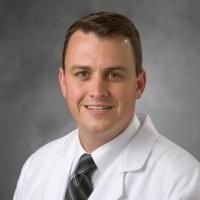Comparison of superior-level facet joint violations during open and percutaneous pedicle screw placement.
Date
2012-11
Journal Title
Journal ISSN
Volume Title
Repository Usage Stats
views
downloads
Citation Stats
Abstract
Background
Superior-level facet joint violation by pedicle screws may result in increased stress to the level above the instrumentation and may contribute to adjacent segment disease. Previous studies have evaluated facet joint violations in open or percutaneous screw cases, but there are no reports describing a direct institutional comparison.Objective
To compare the incidence of superior-level facet violation for open vs percutaneous pedicle screws and to evaluate patient and surgical factors that affect this outcome.Methods
We reviewed 279 consecutive patients who underwent an index instrumented lumbar fusion from 2007 to 2011 for degenerative spine disease with stenosis with or without spondylolisthesis. We used a computed tomography grading system that represents progressively increasing grades of facet joint violation. Patient and surgical factors were evaluated to determine their impact on facet violation.Results
Our cohort consisted of 126 open and 153 percutaneous cases. Percutaneous procedures had a higher overall violation grade (P = .02) and a greater incidence of high-grade violations (P = .006) compared with open procedures. Bivariate analysis showed significantly greater violations in percutaneous cases for age < 65 years, obesity, pedicle screws at L4, and 1- and 2-level surgeries. Multivariate analysis showed the percutaneous approach and depth of the spine to be independent risk factors for high-grade violations.Conclusion
This study demonstrates greater facet violations for percutaneously placed pedicle screws compared with open screws.Type
Department
Description
Provenance
Citation
Permalink
Published Version (Please cite this version)
Publication Info
Babu, Ranjith, Jong G Park, Ankit I Mehta, Tony Shan, Peter M Grossi, Christopher R Brown, William J Richardson, Robert E Isaacs, et al. (2012). Comparison of superior-level facet joint violations during open and percutaneous pedicle screw placement. Neurosurgery, 71(5). pp. 962–970. 10.1227/neu.0b013e31826a88c8 Retrieved from https://hdl.handle.net/10161/31396.
This is constructed from limited available data and may be imprecise. To cite this article, please review & use the official citation provided by the journal.
Collections
Scholars@Duke

Peter Michael Grossi
I’ve wanted to be a doctor for as long as I can remember. I grew up in a suburb of Washington, DC, came to Duke for medical school in 1998, and have been here ever since. I chose neuroscience as my undergraduate major at Amherst University in MA, and stayed with neurosurgery because I was fascinated with the brain and its functions. I enjoy caring for my patients and seeing someone experience a good outcome that positively changed their life. When I’m not working, I enjoy spending time with my wife, who is also a doctor, and our two young daughters. I play golf when I can, which is not often, and really enjoy cooking. If I hadn’t chosen neurosurgery for my career, I would have gone to culinary school.
Unless otherwise indicated, scholarly articles published by Duke faculty members are made available here with a CC-BY-NC (Creative Commons Attribution Non-Commercial) license, as enabled by the Duke Open Access Policy. If you wish to use the materials in ways not already permitted under CC-BY-NC, please consult the copyright owner. Other materials are made available here through the author’s grant of a non-exclusive license to make their work openly accessible.
